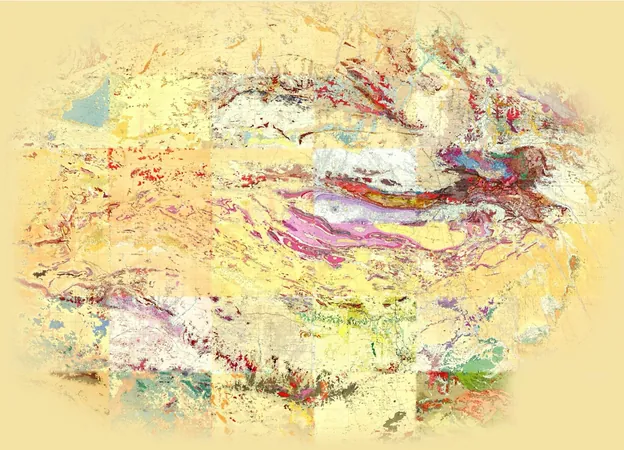
Major Discovery in Australia: Could This Crater Rewrite Earth's Geological History?
2024-09-23
Author: Wei
A colossal crater, spanning over 370 miles (600 kilometers), at the heart of Australia has the potential to significantly alter our understanding of Earth's geological history. Researchers Daniel Connelly and Arif Sikder, Ph.D., from Virginia Commonwealth University, are at the forefront of this groundbreaking discovery, which they have dubbed the Massive Australian Precambrian-Cambrian Impact Structure (MAPCIS).
This sophisticated nonconcentric crater could unravel mysteries of the geological and biological evolution of our planet. VCU’s Arif Sikder expressed immense enthusiasm about the implications of their findings, emphasizing, "Working on the MAPCIS project has been an incredible journey. The data we've gathered offers a unique glimpse into the forces that have shaped our planet, and I'm excited about the future research this discovery will inspire."
For those eager to learn more about this impactful research, Connelly is set to present his findings at Connects 2024, the Geological Society of America's annual meeting in Anaheim, California. Earlier this year, he shared insights at the 37th International Geological Congress (IGC 2024) held in Busan, South Korea, garnering international attention.
The researchers assert that this significant impact event took place at the end of the Ediacaran period within the Neoproterozoic Era, a timeframe that extends from 1 billion to approximately 538.8 million years ago. Their investigations uncovered compelling geological evidence, including extensive deposits of pseudotachylite breccia—essentially melt rock—near the crater's center. Among their most intriguing finds were shocked minerals like lonsdaleite, a rare form of diamond formed under extreme pressure, and significant quantities of iridium, which is often associated with impact events.
Connelly stated, "The discovery of MAPCIS is a testament to the power of collaborative research. Our findings not only illuminate the significance of this impact structure but also pave the way for further exploration into Earth's geological history."
As the scientific community gears up for more research inspired by MAPCIS, this discovery could redefine our understanding of both ancient environments and the cataclysmic events that have influenced the evolution of life on Earth. What could more revelations about MAPCIS uncover? Stay tuned as this story develops!




 Brasil (PT)
Brasil (PT)
 Canada (EN)
Canada (EN)
 Chile (ES)
Chile (ES)
 España (ES)
España (ES)
 France (FR)
France (FR)
 Hong Kong (EN)
Hong Kong (EN)
 Italia (IT)
Italia (IT)
 日本 (JA)
日本 (JA)
 Magyarország (HU)
Magyarország (HU)
 Norge (NO)
Norge (NO)
 Polska (PL)
Polska (PL)
 Schweiz (DE)
Schweiz (DE)
 Singapore (EN)
Singapore (EN)
 Sverige (SV)
Sverige (SV)
 Suomi (FI)
Suomi (FI)
 Türkiye (TR)
Türkiye (TR)